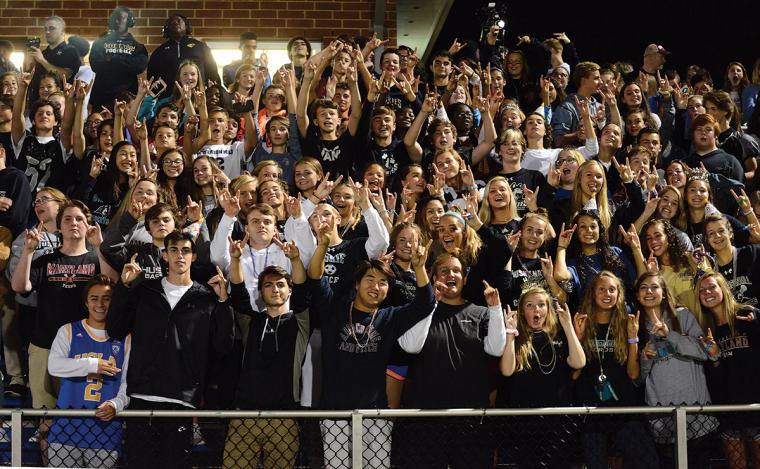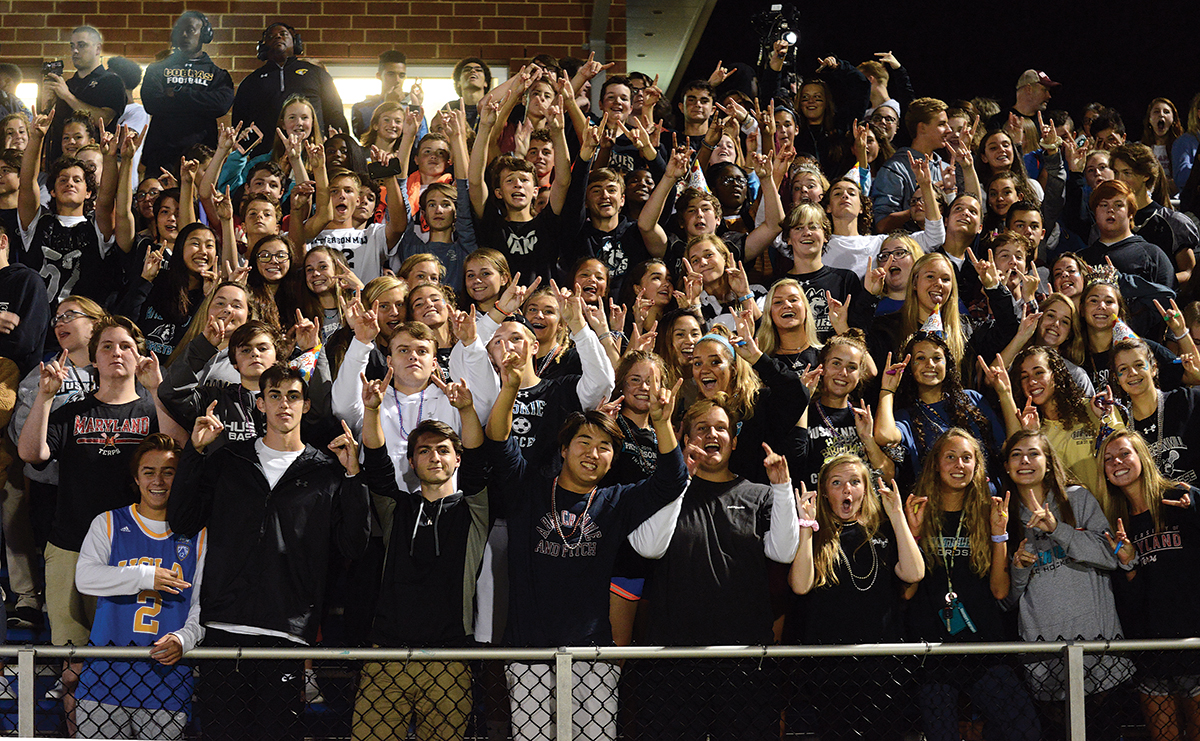

But one thing everyone agrees on: fans are essential. And the sooner they return, the better – for everybody in the industry.
Around the Country
Back in January, Iowa Governor Kim Reynolds made big news by lifting a mandate that previously capped spectator attendance at high school games. That cleared the way for youth athletes to have friends, family members and any others (including the much-desired college scouts) in the stands. Local school districts, however, were allowed to put in place additional regulations as they saw fit.
Florida was able to host larger numbers and golf led the way. In March, the PGA TOUR announced it would allow as many as 10,000 fans to the Players Championship. The Honda Classic quoted the same number. And while fans would have preferred a non-COVID experience (who wouldn’t?), the enthusiasm was unshaken.
In fact, it’s fair to say gratitude over having any spectators at all is strong across the board. The National Cheer Association and National Dance Association Collegiate Cheer and Dance Championship, the single largest collegiate cheer and dance event in the world, stuck its landing in Daytona when it came to town April 7-11, marking its 40th anniversary as well as the 25th anniversary of the event being hosted in that community.
Typically, the five-day event attracts more than 7,000 competitors from top colleges and universities, along with their coaching staff, families and friends, to compete for the national title each year in April. Of course, this year was a bit different.
Linda McMahon, director of group sales with the Daytona Beach Area Convention and Visitors Bureau, said that in a typical year, up to 5,000 spectators often attend. In 2021, the numbers were down; the college championship brought in 3,000 athletes and 2,000 spectators; the high school event had an additional 3,000 athletes. Other squads that could not yet travel were allowed to compete virtually, making it a true hybrid event. The event was live streamed on Varsity TV, widening the audience base.
“I will say their enthusiasm, even if they couldn’t have as many people, was just as high, just as strong as if they were performing in front of huge crowds,” McMahon said happily.
Spectatorship at Pro and Collegiate Sports
Amateur sports are one thing, but pro sports, and their attendant fan base, are quite another. The UFC hosted capacity crowds for UFC 261 at the VyStar Veterans Memorial Arena in Florida in late April. Face masks were not mandatory, but they were provided, and the official position of UFC was to encourage fans to wear them.
An even more ambitious goal was set when NFL Commissioner Roger Goodell said the league hoped to open all of its stadiums at full capacity when the season kicked off in September 2021.
“All of us in the NFL want to see every one of our fans back,” Goodell said in a conference call with reporters, according to the New York Times.
Major League Baseball, meanwhile, had all its ballparks open this spring. Most have limited capacity, but the Texas Rangers opened to a full house (38,238 spectators) at Globe Life Field. Up until then, Alabama had held the record for having the largest number of fans since the start of the pandemic – 47, 218 at a football game.
Another part of the spectator puzzle has been assuring the health of crowds. The UFC partnered with CLEAR to use their Health Pass app to provide a COVID-19 health questionnaire for spectators. New York actually went on record as the first state to issue a digital vaccine passport using IBM’s Excelsior Pass app that displays a personalized QR code verifying vaccine status. The state tested the app at a Brooklyn Nets basketball game and a New York Rangers hockey game in March.
In April, Governor Andrew Cuomo announced on the New York state website that collegiate sports could also resume with limited fans in both indoor and outdoor events. However, if the school or venue were to require all attendees to present proof of a recent negative test result or completed immunization prior to entry (it is not specified whether an app or other platform will be used to do this), capacity could increase up to 150 attendees indoors or 500 attendees outdoors. Maximum occupancy limit of 50 percent remains in effect, pursuant to the state guidance for sports and recreational activities.
Whether other states, other venues and other event owners follow this example is still unknown; however, it may be an option for facilities where event owners want to restore capacity crowds.
As summer moves in, other traditional sports are welcoming back their spectators. The Indy 500 announced it would host up to 135,000 fans – and while that’s 40 percent of the venue’s total capacity, it is still an enormous improvement over 2020 (when it wasn’t run at all).
Yahoo! Sports noted that Indianapolis Motor Speedway has been used as a mass vaccination site since April and accordingly, management was in favor of fans being immunized.
“The number-one thing fans can do to ensure a great race day is get vaccinated as quickly as possible,” Penske Entertainment president and CEO Mark Miles said in a statement. “We continue to offer vaccinations at IMS and will be extending our mass vaccination clinic throughout the month of May. This is all part of the effort to continue getting Indiana back on track.”
One thing’s for sure: everyone wants the fans in the stands.
“A lot of people are trying to figure out how to turn the machine back on,” one veteran broker, Matt Dewire of Valhalla Tickets in Ohio, told ESPN in an interview in March. “Come hell or high water, everybody needs to be on the same page. We need to have the fans back.”
Trade Shows and Expos Also Welcoming Back Crowds
Dewire’s sentiment is echoed across all sports, at all levels. And as sports return, so do the trade shows and expos associated with them. Something that was met with celebration was Denver, Colorado’s announcement that an unlimited number of attendees would be allowed at the Outdoor Retailer expo (a trade show where manufacturers of outdoor sporting goods and similar merchandise can showcase their wares), scheduled for June at the Colorado Convention Center.
Emerald, the exhibition company that administers the show, told Outside Business Journal they had no plans to stage another digital or online show unless it became absolutely necessary. (Denver also called an end to the outdoor mask mandate; it is likely that as other destinations follow suit, they will begin to attract sports events).
Youth Sports Need Spectators (And Not Just to Cheer)
While some states, such as Florida, Texas and Arizona, have been active in recruiting and welcoming tournaments, others, such as California, have been more conservative. Recently, however, the Golden State loosened its restrictions – although by comparison with many other destinations, they’re still fairly stringent. (Example: youth and adult recreational sports teams can compete against others from within the state but not against those from outside the state.)
California’s rules on spectators have been changed as well. While indoor sports still limit spectators to those in the immediate family, outdoor youth sports can follow the same guidelines for spectators as do other live events and performances which have capacity limits depending on each particular county’s tier (tiers are indicative of the total COVID caseload in an area).
While no athletes have benefitted from the pandemic, it appears to have hit high school athletes particularly hard. Those who wanted to be noticed by college scouts were unable to play, as well as to attend showcases or combines, and because many states limited spectators to immediate family members, it meant a complete lack of visibility.
Two phenomena emerged – the first of athletes moving over to travel teams in order to get playing time (and possibly college attention) and even more drastically, students’ entire families moving to states that allowed play. In some cases, the exodus of high school athletes to travel teams and other states caused the high schools to be unable to field teams at all.
Julian Jenkins, senior director of regional recruiting for Next College Student Athlete, a recruiting platform, said high school seniors are at a severe disadvantage because of the pandemic.
“Because of COVID, all of these kids aren’t getting scouted properly, aren’t getting the attention they should be getting if scouts were being deployed,” Jenkins said. “They’re being limited to whatever highlight tapes they can send over and whatever connections they’ve already made.”
The group that sustains the most harm is low-income high school players. They lack the means to participate in travel sports, and should the school decide there are too few students to have a team, they are left with no avenue to showcase their abilities. And in the pandemic, with many families having experienced job loss of one or both parents, money has been tighter than it ever was.
“If you don’t have money, it’s hard to play,” said Tom Farrey, executive director of Aspen’s Sports & Society program.
The National Federation of State High School Associations performed an admirable service by donating Pixellot cameras to each of its member schools to allow them to live stream their games; however, nothing really makes up for the excitement of a live audience.
Nor does it make up for the economic impact. In a typical year, March Madness brings in not just spectators who are in town for the games but those who come to fan fests, expos, parties and other ancillary events, and whose economic impact spills over into restaurant and hotel usage.
The X Factor of Fans
And at the bottom of it all, the spectators are an enormous reason why athletes are motivated. Carrie Wicks, a sports psychologist based in California who counts a few Major League Baseball players as clients, told USA TODAY that a player had said, “the audience is the drug.”
“It’s not just competition. It’s a performance,” she added. “Many athletes have a schtick that brings them to peak performance, and that is brought out by the audience.”
The Golden State Warriors, in gearing up for their first game in 409 days in front of a live home crowd, were already feeding off the energy long before the first fan set foot inside the Chase Center in San Francisco.
“Fans bring an extra set of passion and emotion to the game,” guard Kelly Oubre Jr. told reporters at The Mercury News. “So I’m super excited to get back out there and perform in front of them, also hear their chants, their cheers. It’s going to be super exciting.”
“Obviously, it’s better when it’s with fans,” LA Football Club coach Bob Bradley told L.A. Times reporters from the MLS Is Back tournament. “That brings the game to life.”
“I think as golfers we all like to play in front of fans and be able to perform,” golfer Matt Jones told reporters from the Palm Beach Daily News following the Honda Classic. “It gives us probably a little more adrenaline, more focus when you know they’re out watching you hit good shots. To have them back is fantastic, and hopefully it just continues to grow, and we continue to get more fans back every week.” SDM

